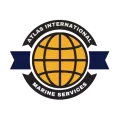Carbon Emissions Rocket as Ships Reroute from Red Sea to Cape

The global shipping industry, a critical component of international trade, is facing a significant challenge that could derail its efforts to reduce carbon emissions.
The rerouting of ships away from the Red Sea due to attacks by Houthi rebels is causing a substantial increase in carbon emissions, with potential long-term impacts on climate goals and the sustainability of the shipping sector.
Increased Emissions from Longer Routes
The diversion of commercial shipping around the southern tip of Africa, specifically the Cape of Good Hope, is leading to a dramatic rise in CO2 emissions.
The longer sailing distances—31 percent and 66 percent longer for routes between Asia and Northern Europe and the Mediterranean, respectively—are expected to sharply increase emissions for the sector.
This is exacerbated by the fact that some vessels may speed up to compensate for the time lost on these longer routes, further increasing emissions.
The use of smaller, less fuel-efficient vessels in response to supply chain issues is also contributing to this rise, potentially increasing emissions by 141 percent per standard 20-foot container.
Impact on Climate Goals
The shipping industry’s climate targets, including the International Maritime Organization’s (IMO) interim goal of reducing emissions by at least 20 percent by 2030, are under threat due to these rerouting measures.
The industry is responsible for roughly 3% of global emissions, and the IMO has set ambitious targets to reach net-zero emissions by 2050.
However, the current crisis could impede progress towards these goals.

Economic Implications and Market Responses
The crisis has led to volatile and rising ocean freight shipping rates due to longer transit times and increased fuel costs.
Contracted freight rates are now at risk, and carriers are unlikely to honor previous agreements, pushing shippers onto the spot market.
Companies are advised to prepare for the use of different modes of transportation and to stay informed about market trends and geopolitical developments.
Technological and Policy Solutions
To mitigate the impact of increased emissions, technological advancements and consistent policies are crucial.
The maritime sector is exploring the use of alternative fuels, such as LNG, methanol, ammonia, hydrogen, and biofuels, which can significantly reduce emissions.
Investment in research, development, and innovation is necessary to support the transition to these cleaner energy sources.
Additionally, the inclusion of maritime shipping in the European Emissions Trading System (EU ETS) from January 2024 will impose additional carbon costs on carriers.
The Role of Data Analytics and Optimization
Advanced route optimization algorithms and real-time data analytics can help shippers navigate supply chain complexity and minimize the emissions impact of reroutes.
Companies like Searoutes offer CO2 emissions tracking tools and technology platforms that enable quick reactions to supply chain disruptions.
Conclusion
The rerouting of ships due to the Red Sea crisis has led to a significant increase in carbon emissions, posing a threat to the shipping industry’s climate targets.
The economic implications are profound, with increased shipping costs and the potential for market shifts.
To address these challenges, the industry must focus on technological solutions, policy measures, and the use of data analytics to optimize routes and reduce emissions.
It is imperative that companies do not lose sight of their long-term sustainability commitments despite the immediate crisis
Found this article interesting, and useful? Please feel free to interact, recommend and share.
If you have any questions about this topic or would like to discuss your own business needs, please contact us today!
Carbon Emissions Rocket as Ships Reroute from Red Sea to Cape Read More »















